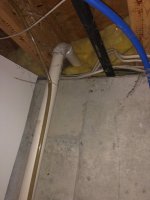CaptainJK
New Member
Hi all,
I'd be grateful for your advice. My full NTL tests are attached.
Current water system: ~400 ft well, 20 year old home with 1" copper piping, cartridge-style sediment filter is only "treatment"
Current water observations: Our water is clear and tastes very good. (I am somewhat concerned about degrading the taste of our water with whatever treatment we install.) Our main issues are related to hardness - glass spotting, difficulty getting soap to suds-up, etc. Our secondary issue is iron-colored sediment in toilet tanks. I originally thought that this was typical sediment, but I now wonder if it is caused by the iron bacteria. The "sediment" isn't bad which may be because my iron levels look low on the lab tests.
In addition to a softener, do you think I should treat my marginally low pH? My water pressure is currently good, but not great, so I'd like to minimize any additional drop in pressure from a treatment system.
Thank you for your help.
John
I'd be grateful for your advice. My full NTL tests are attached.
Current water system: ~400 ft well, 20 year old home with 1" copper piping, cartridge-style sediment filter is only "treatment"
Current water observations: Our water is clear and tastes very good. (I am somewhat concerned about degrading the taste of our water with whatever treatment we install.) Our main issues are related to hardness - glass spotting, difficulty getting soap to suds-up, etc. Our secondary issue is iron-colored sediment in toilet tanks. I originally thought that this was typical sediment, but I now wonder if it is caused by the iron bacteria. The "sediment" isn't bad which may be because my iron levels look low on the lab tests.
In addition to a softener, do you think I should treat my marginally low pH? My water pressure is currently good, but not great, so I'd like to minimize any additional drop in pressure from a treatment system.
Thank you for your help.
John

